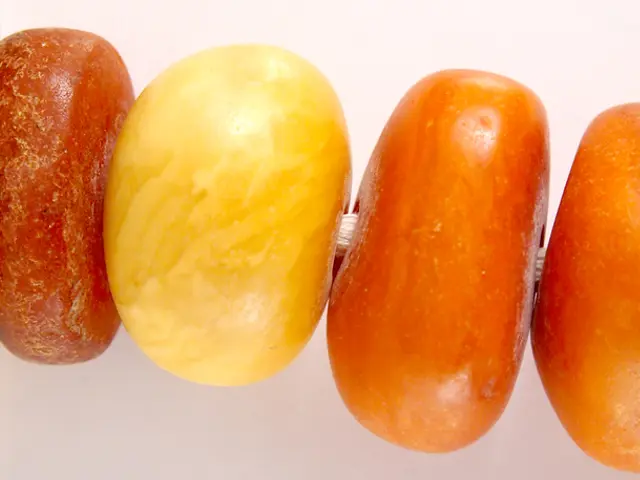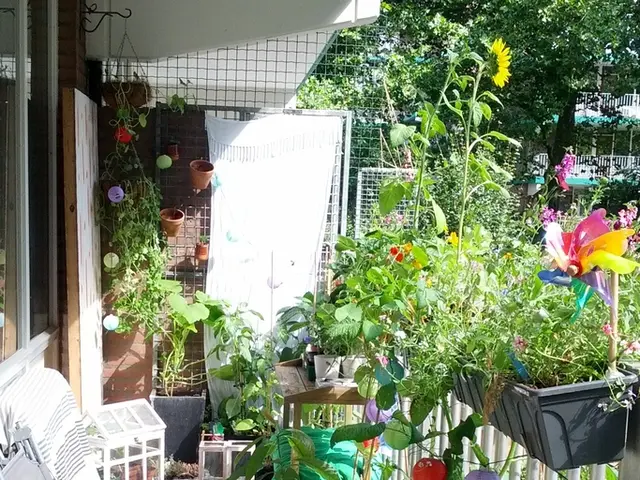Signs for Gardeners: Recognizing Fully Ripe Strawberries for Picking
Strawberries are a delightful addition to any home garden, and with the right care and knowledge, you can enjoy a bountiful harvest. In this article, we'll explore the three main types of strawberries, their growth patterns, and tips for optimal growth.
Three Main Types of Strawberries
- June-bearing strawberries produce one large crop of berries typically in late spring to early summer (June-July). A popular June-bearer is ‘Hood,’ known for excellent flavor and fruit quality.
- Day-neutral strawberries bear fruit continuously throughout the growing season, from late spring until fall, producing smaller but consistent harvests. Varieties such as ‘Albion’ produce large, good-quality berries that store well, while ‘Seascape’ produces smaller but reliable fruit.
- Everbearing strawberries produce two or three harvests per year (spring and late summer). Though older everbearing varieties like ‘Quinault’ are less popular today, they are still an option for extending harvests.
Growth Patterns and Planting Systems
- June-bearers are often grown in the matted row system, where plants are spaced 2 feet apart in rows, and runners fill the bed after the first year. Flowers are removed the first year to encourage runner growth, with fruit harvest starting the second year.
- Day-neutral and everbearing require different care, with more focus on managing flowering and fruiting throughout the season rather than just one burst of harvest.
- Plants should be spaced about 35 cm (13 in) apart in rows 75 cm (30 in) apart for good air circulation and growth. Strawberries need shallow planting; crowns planted at soil level with roots just below, avoiding root bending.
Additional Care Tips
- Strawberries are self-pollinating but yield better fruit if pollinated by bees, so a bee-friendly garden helps.
- Use straw mulch or polythene under fruits to keep them clean and prevent rot.
- For early harvest, cover early varieties with cloches or polythene to warm the soil and advance fruiting by 2-3 weeks.
- Strawberries grow best in sandy loam soils with good drainage and pH 6.0-6.5.
Harvesting and Storing Strawberries
- Storing strawberries properly can greatly extend their shelf life. Store them in a single layer on a paper towel-lined container, keeping them cool and dry.
- Picking in the morning is ideal because the berries are cool and firm. Avoid berries with green or white patches. Leaving a small bit of the stem on the berry can help prolong freshness.
- When picking, handle strawberries with care to avoid bruising.
- Removing any damaged berries is essential to prevent quicker spoilage of the rest.
Pest and Wildlife Protection
Strawberries require protection from pests and wildlife, such as netting, fences, organic pesticides, and proper spacing.
Resources
This overview is based on Oregon and Clemson extension information and gardening guides from 2025, reflecting current recommended strawberry varieties and best practices for home gardens.
Larry Meyers, a gardening expert with over 10 years of experience, has written articles about various topics, including when to plant tulips in Missouri, snail bait safety for dogs, and when to plant pumpkins in Michigan for Halloween.
By following these tips, you'll be on your way to a thriving strawberry patch! Happy gardening!
Here are two sentences in English that contain the words 'lifestyle,' 'home-and-garden,' and 'gardening':
- Engaging in home-and-garden projects, including gardening, can contribute to a fulfilling and serene lifestyle.
- By incorporating a strawberry patch into your home-and-garden, you can enjoy fresh berries and create a rewarding addition to your lifestyle.




